Style features
Without going into subtleties, oriental design is subdivided into Asian (Japan, China) and Arabic style (Morocco, India). Each of them has its own characteristics, but there is something in common for all types:
- Natural materials. It's not just about wood and clay, but also about silk.
- Patterns. Ornament in decoration and decoration is a striking distinctive element.
- Decor. Frames and figurines, soft pillows and unusual curtains.
- Lightweight partitions. Ideal for separating the dining area.
- Elegant furniture. Wicker or thin material.
The photo shows an u-shaped kitchen sofa with patterns in an oriental style.
What color range should you choose?
An oriental style kitchen involves immersion in a warm spectrum and the use of bright summer colors - yellow, turquoise, red, orange. But their combination depends on the chosen direction:
- calm light shades with black, brown and other dark contrasts are characteristic of the Japanese style;
- gold and scarlet preferred in Chinese interiors;
- white, terracotta, blue highlight the Moroccan style;
- deep chocolate, coral, sandy characterize the African direction.
What kind of furniture and appliances will fit?
An oriental-style kitchen should, if not be expensive, then at least look like that. This is especially true of the Arab movement - you cannot do without high-quality furniture made from natural materials. The Arabic style is also distinguished by the decoration of interior items with stained glass, carvings and metal.
The Asian (especially Japanese) style, by contrast, advocates simplicity. The best choice is a minimalistic typeface with a regular geometric shape. A combination of matte glass with glossy facades is often used - it looks very advantageous. In favor of minimalism, also abandon the classic handles: use hidden door opening systems.
Chinese style is also against abundance, but the main shape here is a circle. The most suitable material for furniture is bamboo or rattan. Kitchen set, table and chairs can be decorated with hieroglyphs or painting.
An oriental-style kitchen requires inconspicuous household appliances: choose the most laconic models that will not argue with the decor and attract attention. Hide appliances that do not require constant presence on the surface in cabinets.
In the photo there are white built-in shelves in the Moroccan style.
Finishing nuances
Oriental-style kitchen design stands out among others primarily by three elements:
- Arch. Rounded partitions are installed in studio apartments or they are replaced with ordinary doors. Ideal if they have a domed vault.
- Mosaic. Unusual patterns of small stones, like a teleport, take us to the East. Use this vibrant decor in your interior.
- Ornament. Decorating the floor or walls with unusual painting will add flavor to any oriental-style kitchen.
An Asian-style floor is preferably wooden, but in modern conditions it can be replaced with laminate or textured linoleum. The main material of Arabian flooring is porcelain stoneware or patterned tiles.
The walls of the Asian direction are monochromatic - paint them or select the appropriate wallpaper. The same cannot be said about the Arabian style - the wall decoration here is very expensive, ideally it should imitate silk (special wallpaper or decorative plaster).
The design of the apron also varies. For Asia, plain or with a suitable print skinals, or inconspicuous tiles are suitable. Mosaics, painted ceramics and other interesting ways decorate Arabian kitchens.
To simulate a Chinese or Japanese ceiling, use wood beams and matte luminescent panels in between. Moroccan ceilings are eye-catching in shape and color: create a plasterboard dome-like structure or paint an oriental fresco.
In the photo there are domed niches.
We select the right curtains and kitchen textiles
Luxurious curtains in the Arabian style are sewn from expensive shiny fabrics or thick velvet, decorating with fringe, decorative tassels and lambrequins. To imitate China and Japan, neutral roller or paper curtains are used in the apartment.
The photo shows an oriental style kitchen design with blue curtains.
The rest of the textiles have something in common with the design of the curtains. Morocco and India love softness - which is why a low sofa with lots of bright little cushions is the perfect companion for a dining table.
The Asian style does not accept pillows and tablecloths; here the emphasis on the walls will be fabric traditional panels. And for serving, use bamboo or linen mats.
The photo shows an interesting idea of decorating a kitchen in an oriental style with colored rugs.
What décor and accessories are suitable?
Although the Japanese and Chinese love minimalism, a bit of oriental décor doesn't hurt. Paintings with traditional motives in the form of dragons or landscapes, frames with hieroglyphs, netsuke and other figurines, beautiful porcelain, fans, ikebana will do. From living potted plants, place an orchid, dracaena sandera (similar to bamboo), bonsai.
Arabian stylistics adheres to the position of "there is never too much decor". Therefore, add a soft carpet in the dining area, unusual vases and dishes, a hookah, and beautiful lamps to the pillows and accent curtains.
What kind of lighting to choose?
The kitchen should be the brightest place in the house, so use multiple light sources.
The first step is to choose a central luminaire. Moroccan design calls for a chic oversized chandelier that will become the center of attention in your kitchen. Classic combinations are metal with transparent or mosaic glass. For the traditional Asian style, lamps are hidden behind ceiling panels or used as lamps in the form of square lanterns.
Above the dining table, the Arabs prefer twilight; wall or ceiling shades made of colored mosaic will do. When recreating the Japanese and Chinese directions, refer to the same panels, paper lanterns or laconic pendants.
The working area in the Arabian kitchen is illuminated with beautiful sconces or hidden lighting. Minimalist recessed lights will do the trick in an Asian setting.
The photo shows a metal pendant lamp.
Photo gallery
Small and large oriental kitchens should clearly reflect the stylistic direction. You have learned all the secrets of such a design and you can safely start repairing!

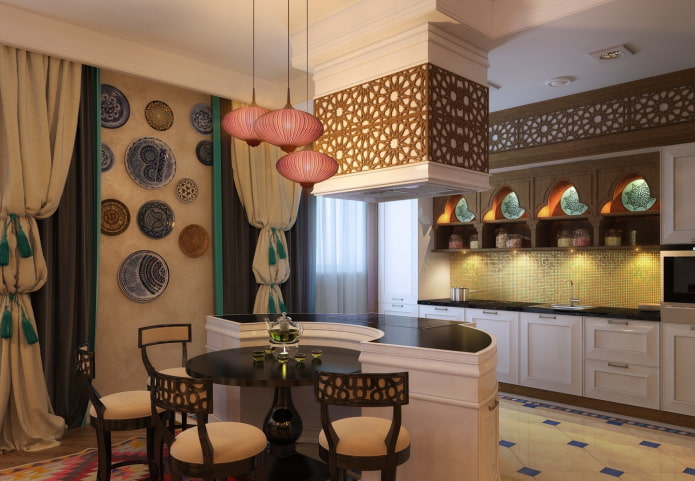
 10 practical tips for arranging a small kitchen in the country
10 practical tips for arranging a small kitchen in the country
 12 simple ideas for a small garden that will make it visually spacious
12 simple ideas for a small garden that will make it visually spacious
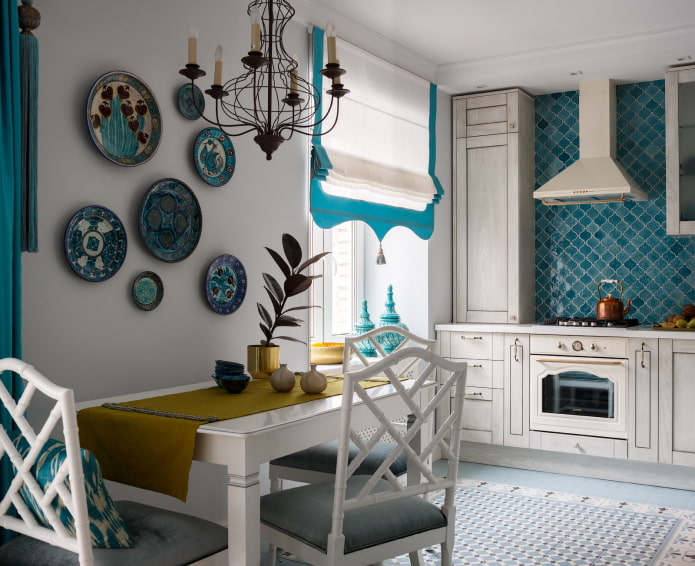
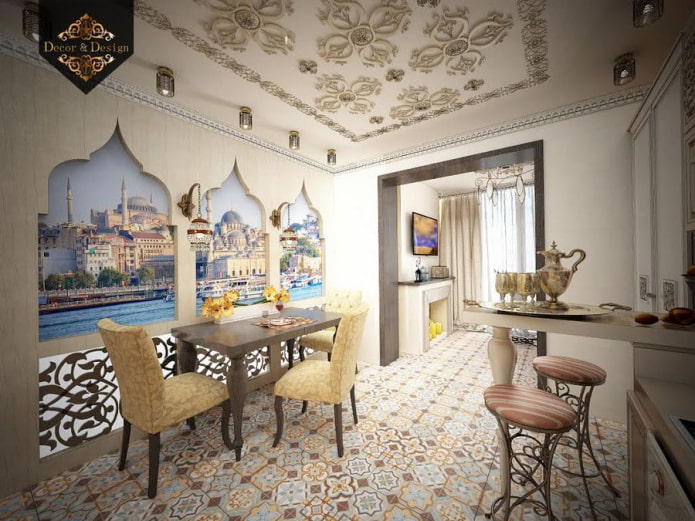
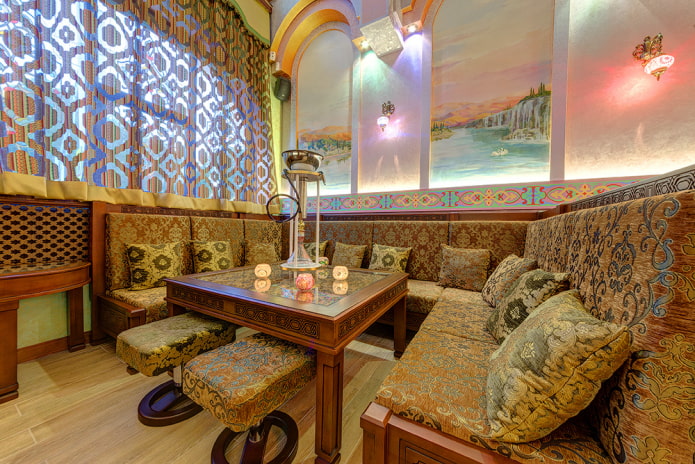
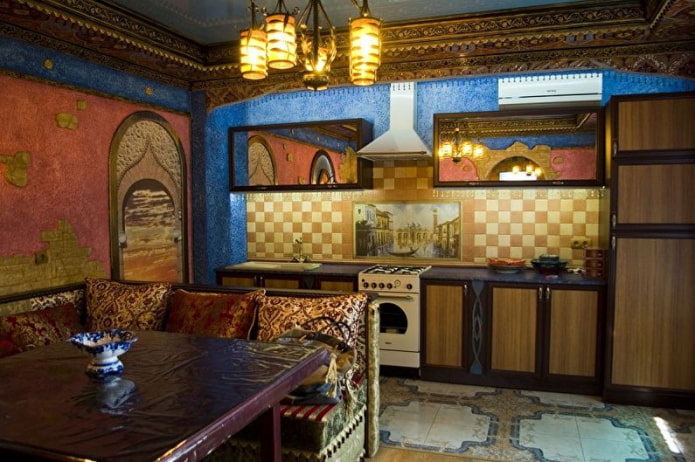
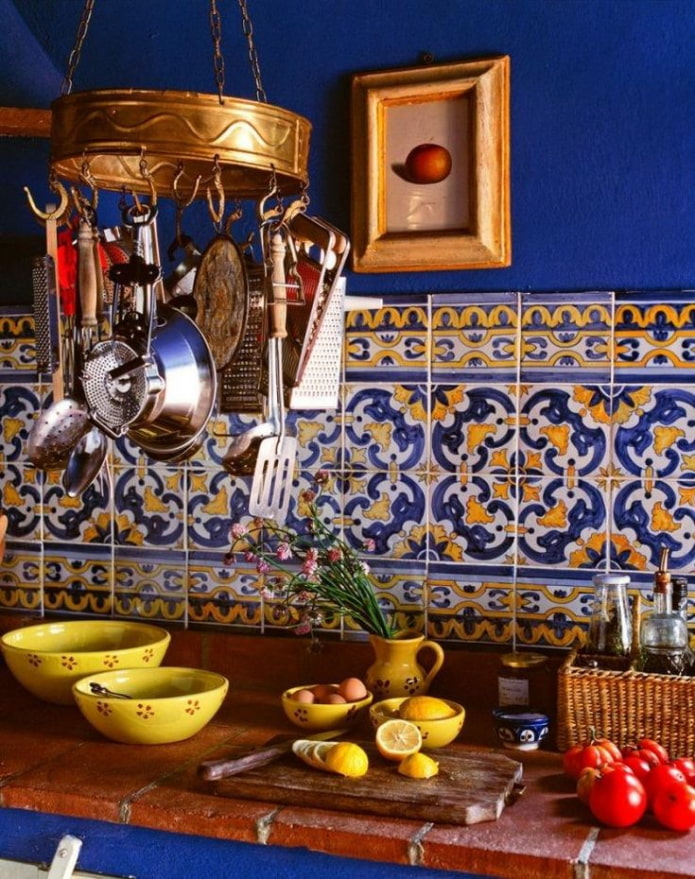
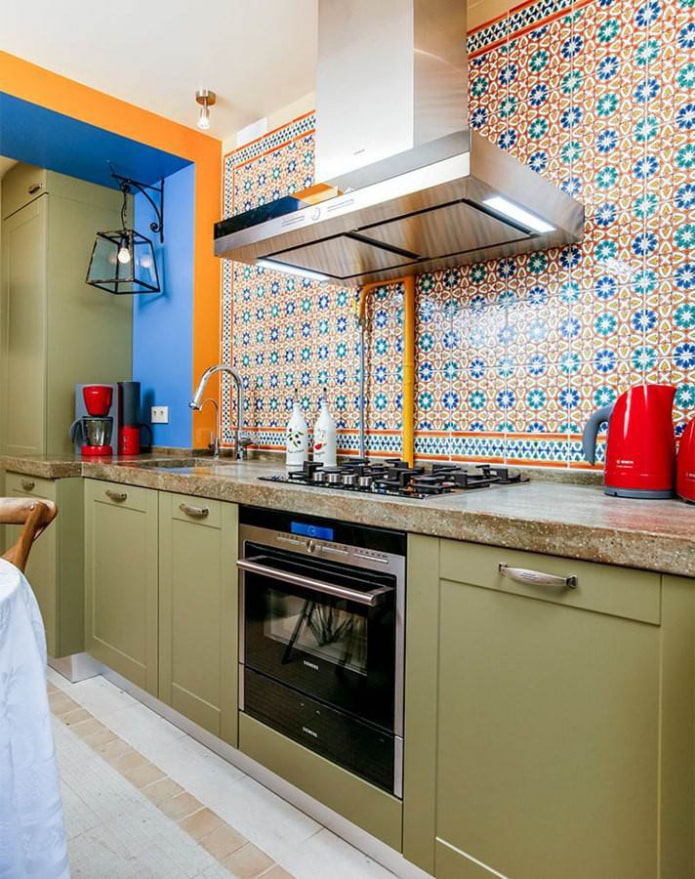

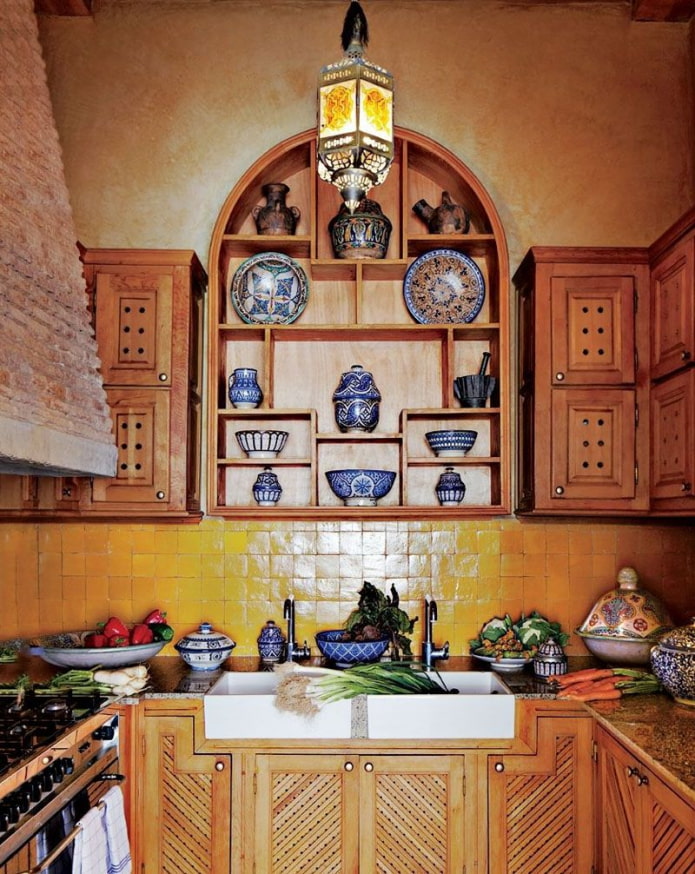
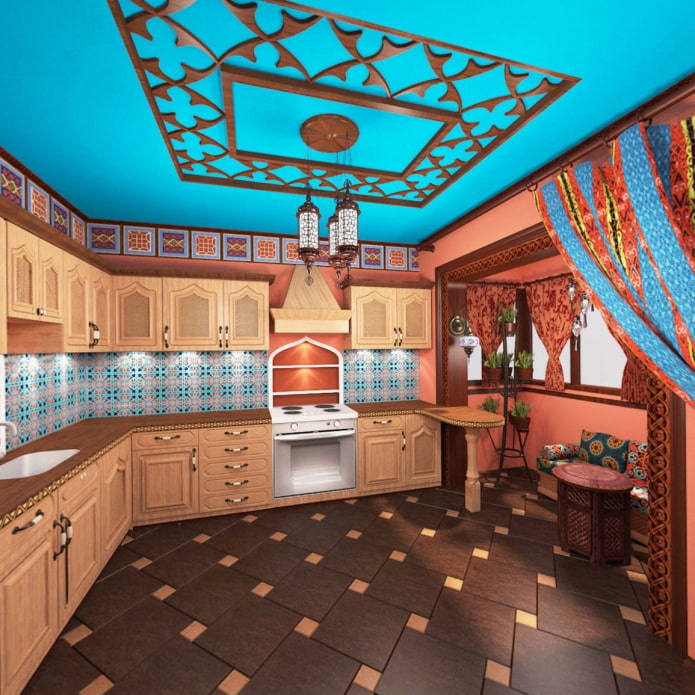

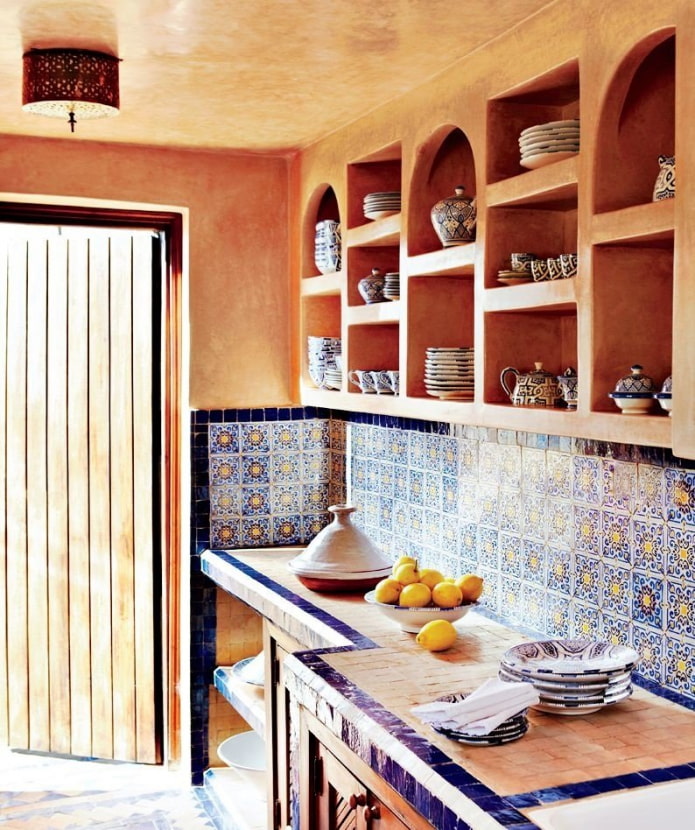
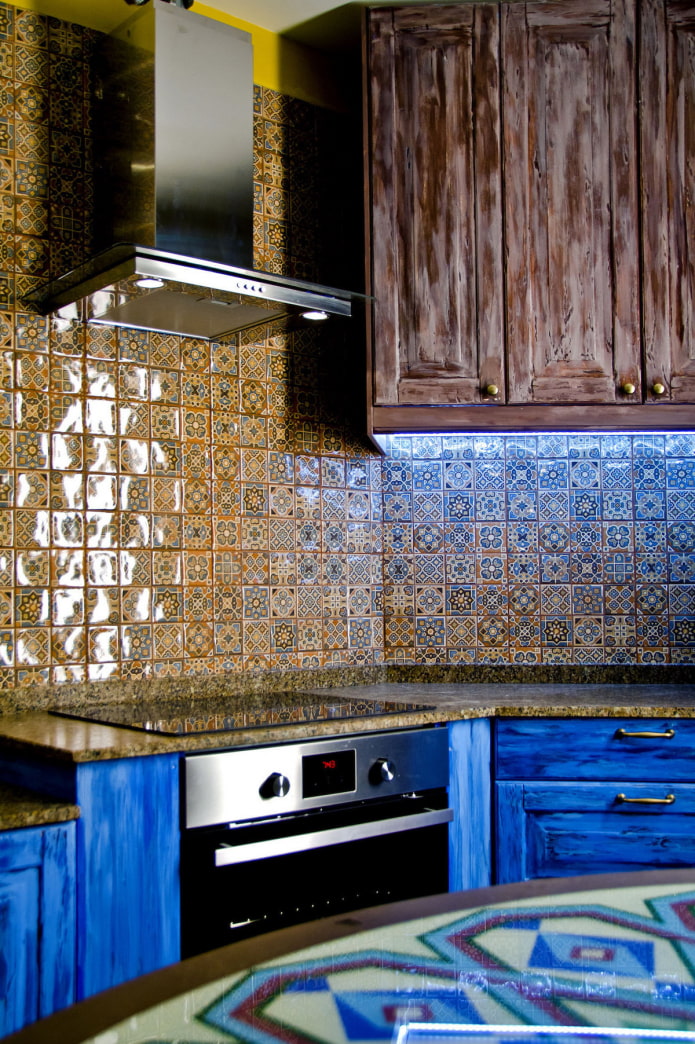
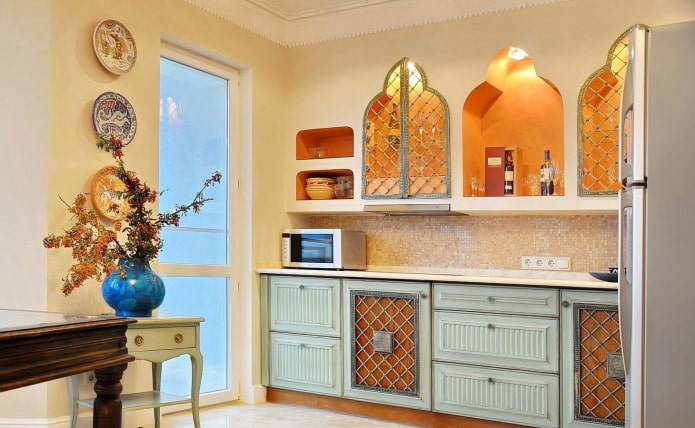
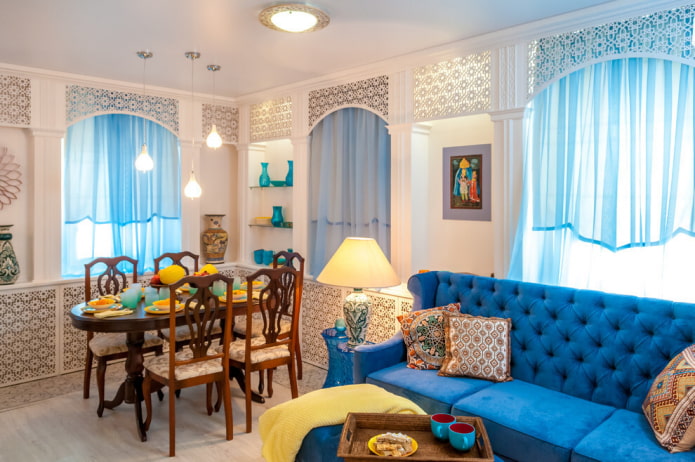

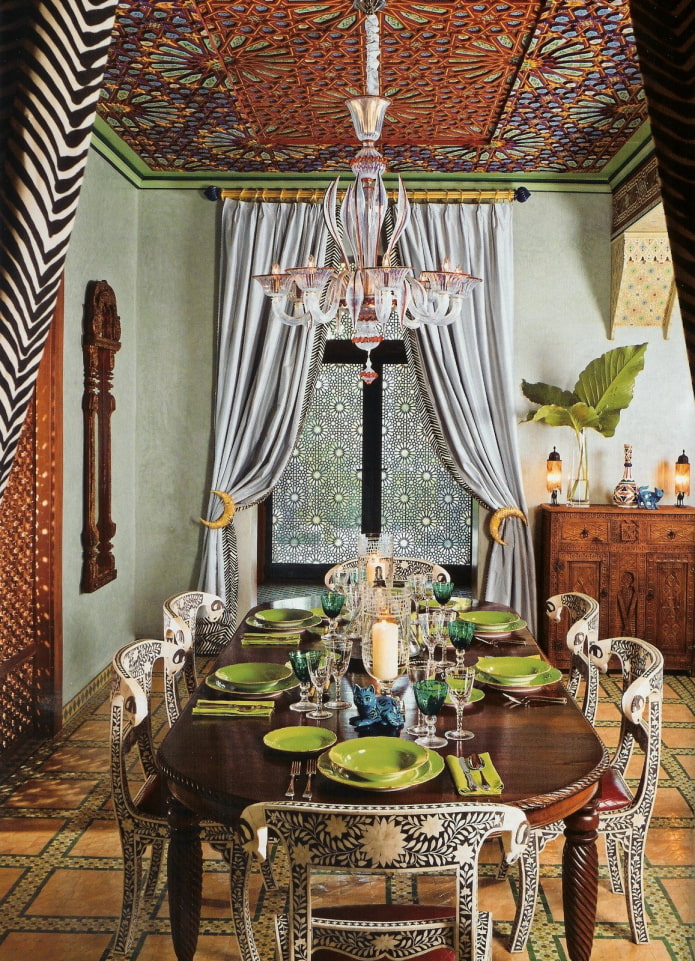
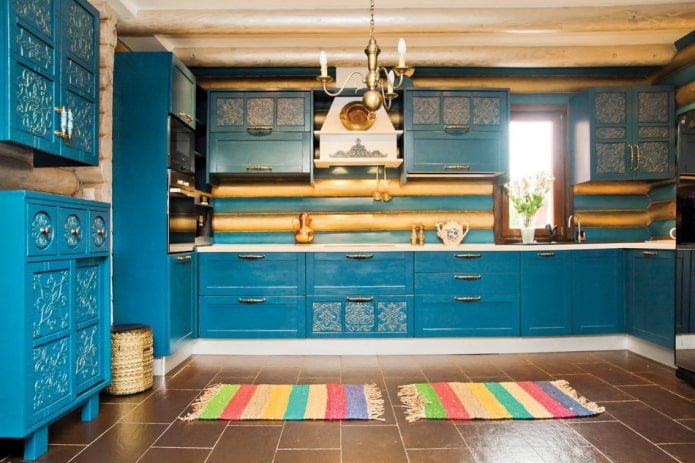

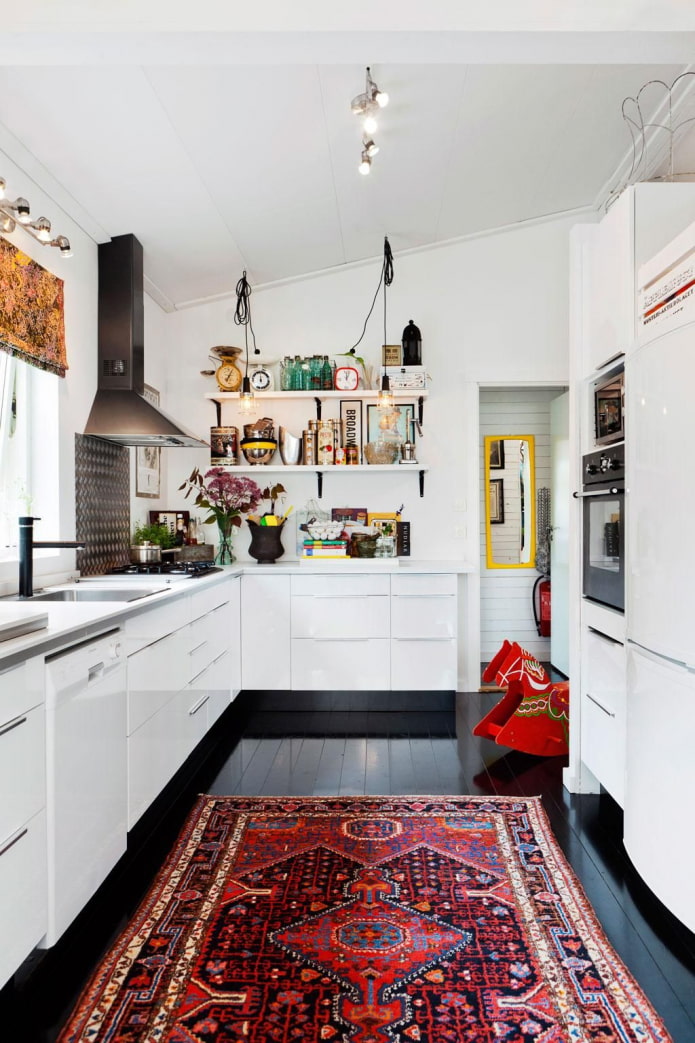

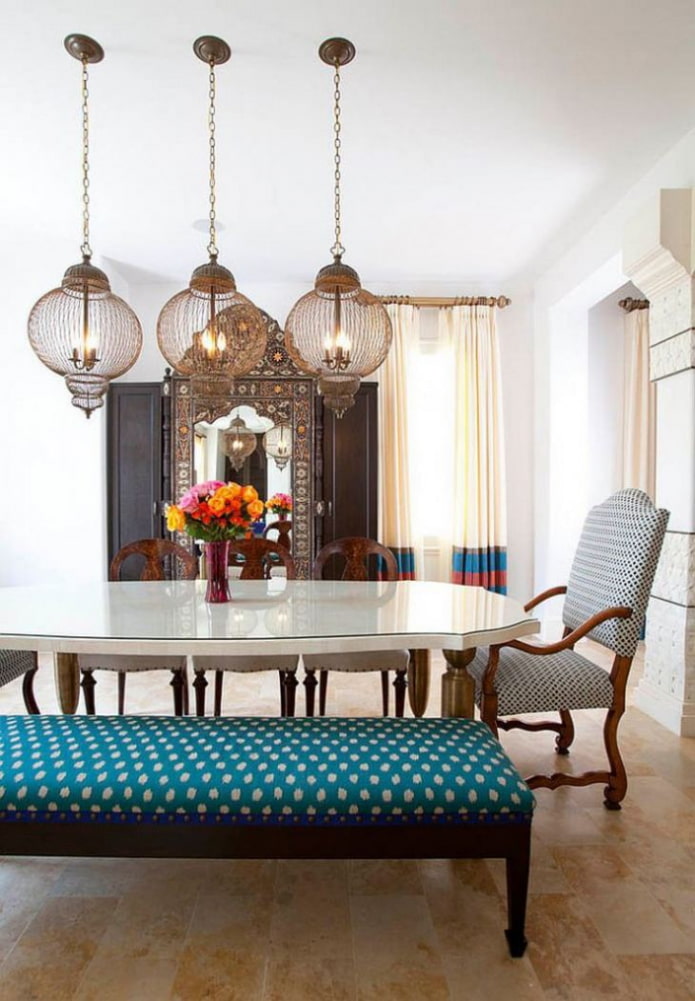
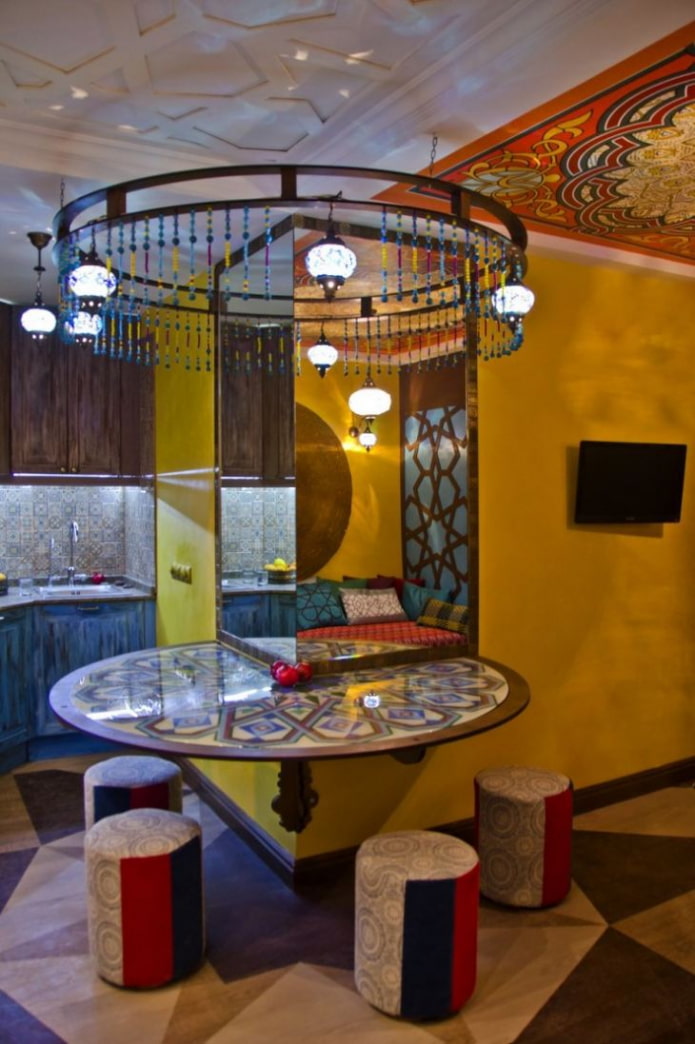
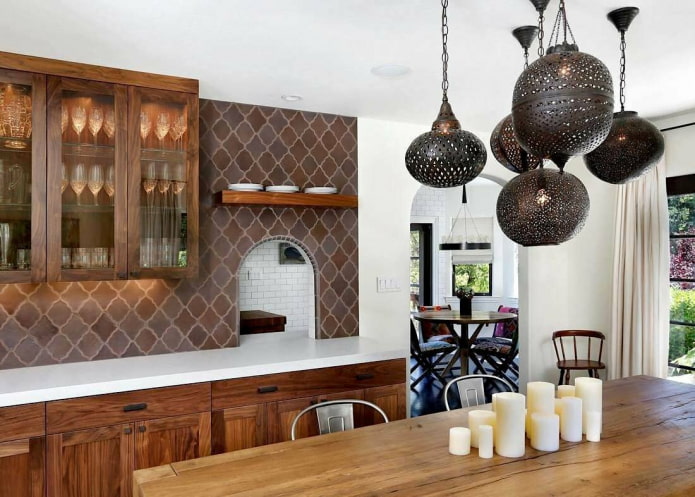
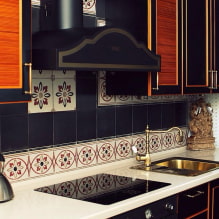
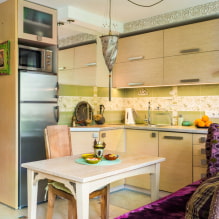
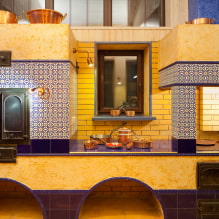

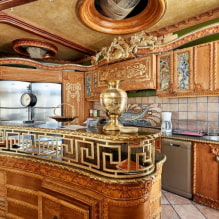

 How to choose the color of your kitchen sink?
How to choose the color of your kitchen sink? White kitchen set: features of choice, combination, 70 photos in the interior
White kitchen set: features of choice, combination, 70 photos in the interior Black set in the interior in the kitchen: design, choice of wallpaper, 90 photos
Black set in the interior in the kitchen: design, choice of wallpaper, 90 photos How to choose curtains for the kitchen and not regret it? - we understand all the nuances
How to choose curtains for the kitchen and not regret it? - we understand all the nuances Design of a white kitchen with a black countertop: 80 best ideas, photos in the interior
Design of a white kitchen with a black countertop: 80 best ideas, photos in the interior Kitchen design with green wallpaper: 55 modern photos in the interior
Kitchen design with green wallpaper: 55 modern photos in the interior